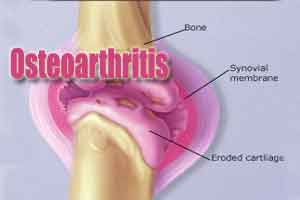- Home
- Editorial
- News
- Practice Guidelines
- Anesthesiology Guidelines
- Cancer Guidelines
- Cardiac Sciences Guidelines
- Critical Care Guidelines
- Dentistry Guidelines
- Dermatology Guidelines
- Diabetes and Endo Guidelines
- Diagnostics Guidelines
- ENT Guidelines
- Featured Practice Guidelines
- Gastroenterology Guidelines
- Geriatrics Guidelines
- Medicine Guidelines
- Nephrology Guidelines
- Neurosciences Guidelines
- Obs and Gynae Guidelines
- Ophthalmology Guidelines
- Orthopaedics Guidelines
- Paediatrics Guidelines
- Psychiatry Guidelines
- Pulmonology Guidelines
- Radiology Guidelines
- Surgery Guidelines
- Urology Guidelines
Bariatric surgery beneficial in knee osteoarthritic knee pain

More than 130,000 Americans have had Lap band procedure done since 2011, national statistics show. The operation is considered relatively safe and complications may include nausea, stomach ulcers, and infection.Dr.Jonathan Samuels and associates have found in a new Study that extremely obese people who have a band surgically strapped around their stomachs to restrict food intake not only lose weight but also suffer less from osteoarthritic knee pain.The study has been published in the journal Seminars in Arthritis and Rheumatism.
The pain, say the study leaders at NYU School of Medicine, proceeds from the deterioration and related inflammation in knee joints caused in part by the extra weight they bear. And while the pain relief seen with lap-band surgery applied to all patients with osteoarthritic knees, researchers found that it was most helpful in the youngest men and women who lost the most weight.
"Our study shows that extremely obese people seeking relief from their knee pain should consider lap-band surgery earlier because the benefits from it being successful -- although significant for all ages -- decrease with age," says study senior investigator and rheumatologist Jonathan Samuels, MD.
An associate professor in the Department of Medicine at NYU School of Medicine, Samuels says it is likely that knee joints and cartilage become so damaged after a certain point that there is little cushion left for weight loss to preserve. Along these lines, the research team found that people in their 40s reported nearly twice as much pain relief after lap-band as those who had the surgery in their 50s.
The study authors say their findings are especially important because one in three American adults is now overweight. Studies also show that the number of Americans with osteoarthritis has more than doubled since World War II.
Published online in the journal Seminars in Arthritis and Rheumatism in February, the new analysis was based on the experiences of 120 patients at NYU Langone Health who underwent lap-band surgery between 2002 and 2015. All were surveyed about what they remembered about their knee pain immediately before surgery, a year after their procedure, and for as long as 14 years later.
The main purpose of the survey, researchers say, was to find out why some extremely obese people showed more knee-pain relief from lap-band surgery than others. Study participants had an average body mass index, or BMI, of 40, which equates to a 5 feet and 10 inches-tall man who weighs about 280 pounds, or a 5 foot 6 inches-tall woman who weighs 250 pounds.
According to the survey results, men and women in their 40s experienced postsurgical knee pain reductions after one year of between 50 percent and 60 percent; while those in their 50s, one year later, had pain reductions between 30 percent and 40 percent; and those in their 60s, had reductions between 20 percent and 30 percent. Pain relief persisted for a decade in all patients monitored.
Results also showed that BMI at the time of surgery did not influence whose knee pain went down the most. People with BMIs in the upper 40s were just as likely to report decreased knee pain as people with BMIs in the lower 40s if they lost proportionally the same amount of total body weight.
However, study participants who lost the most weight had the steepest reductions in knee pain. Dropping more than 13 points on the BMI scale -- a measure of kilograms per meter squared based on height -- halved their pain scores, assessed on a scale from one to 10, when compared to people who lost eight or fewer BMI points.
Although the investigators acknowledge that surveys that gather self-reported symptoms can be biased to a certain extent, the consistency of their findings over time adds to their credibility, the NYU team noted.
Study lead investigator Shannon Chen, BA, says the team is already collecting further data on patients having lap-band and other types of more-aggressive weight-loss surgeries.
These studies are also investigating the impact of weight loss on underlying biological changes caused by fat tissue and inflammation in the knees.
Funding support for the study was provided by NYU Langone. Besides Samuels and Chen, other members of the NYU research team are Fernando Bomfim, BA; Heekoung Youn; and Christine Ren-Fielding, MD.
For more details click on the link: DOI: 10.1016/j.semarthrit.2018.02.001
BMIDr Jonathan Samueljournal Seminars in Arthritis and Rheumatismknee osteoarthritis painknee painnauseaosteoarthritic knee painosteoarthritis painpostsurgical knee painstomach ulcers
Source : With inputs journal Seminars in Arthritis and RheumatismNext Story
NO DATA FOUND

Disclaimer: This site is primarily intended for healthcare professionals. Any content/information on this website does not replace the advice of medical and/or health professionals and should not be construed as medical/diagnostic advice/endorsement or prescription. Use of this site is subject to our terms of use, privacy policy, advertisement policy. © 2020 Minerva Medical Treatment Pvt Ltd